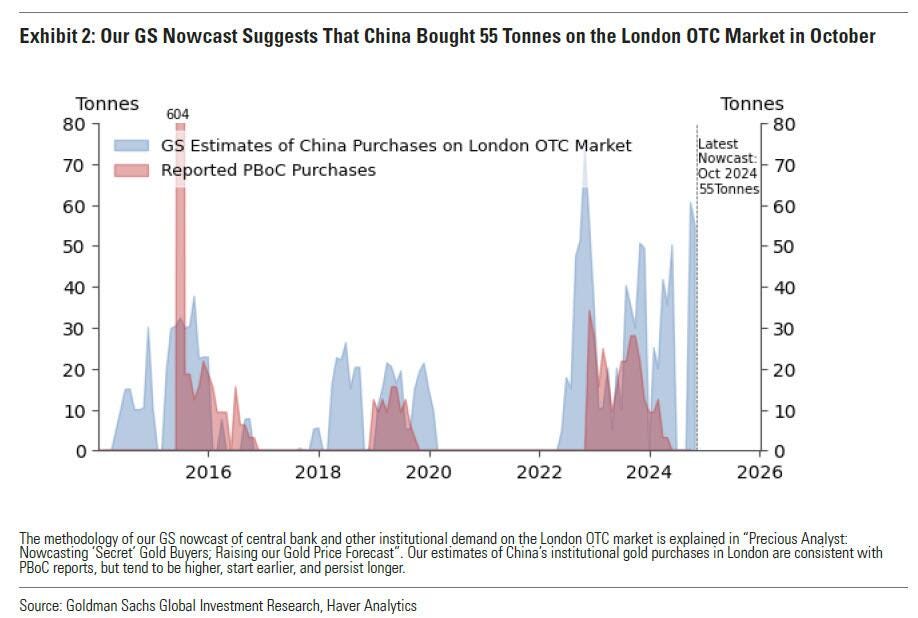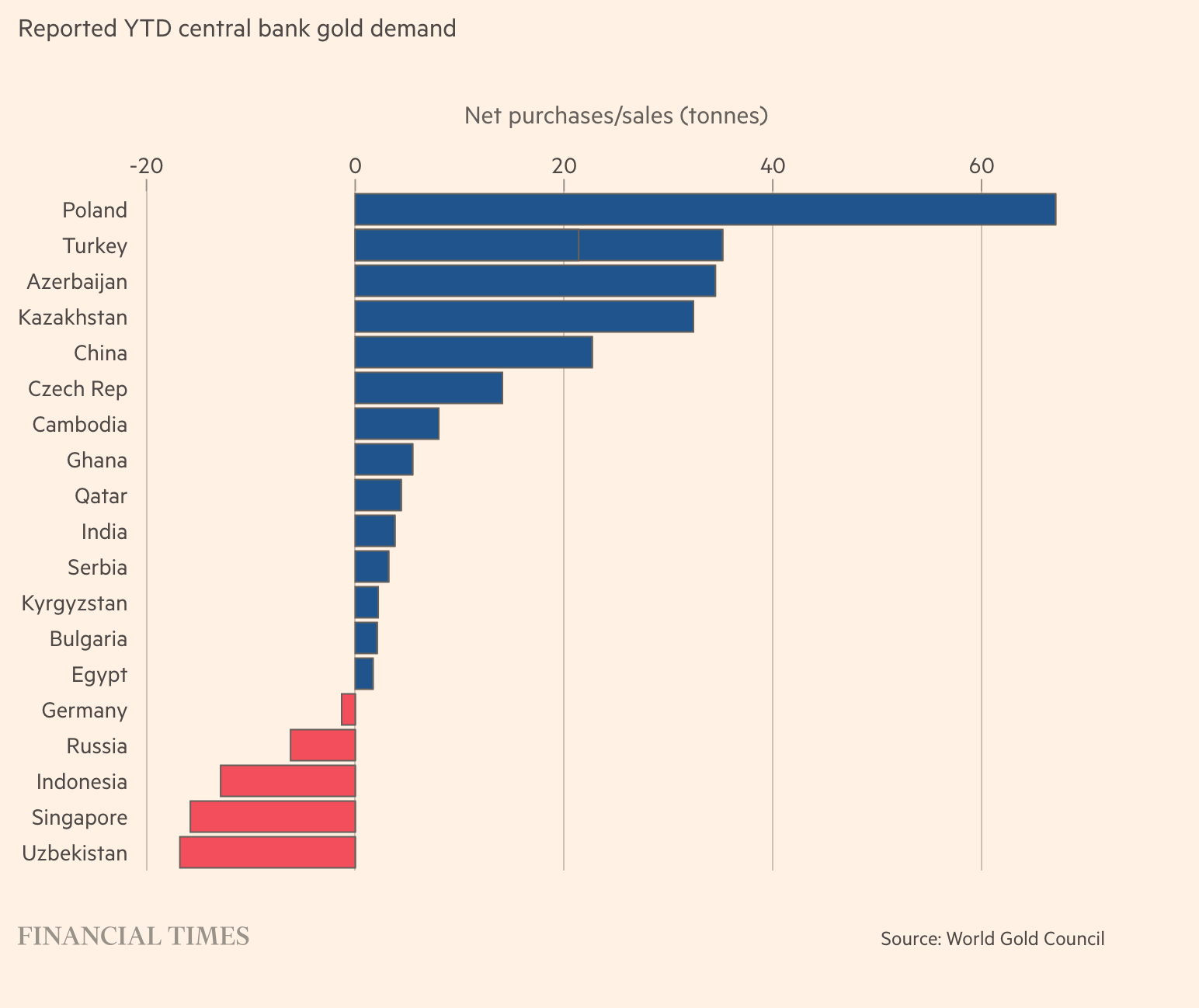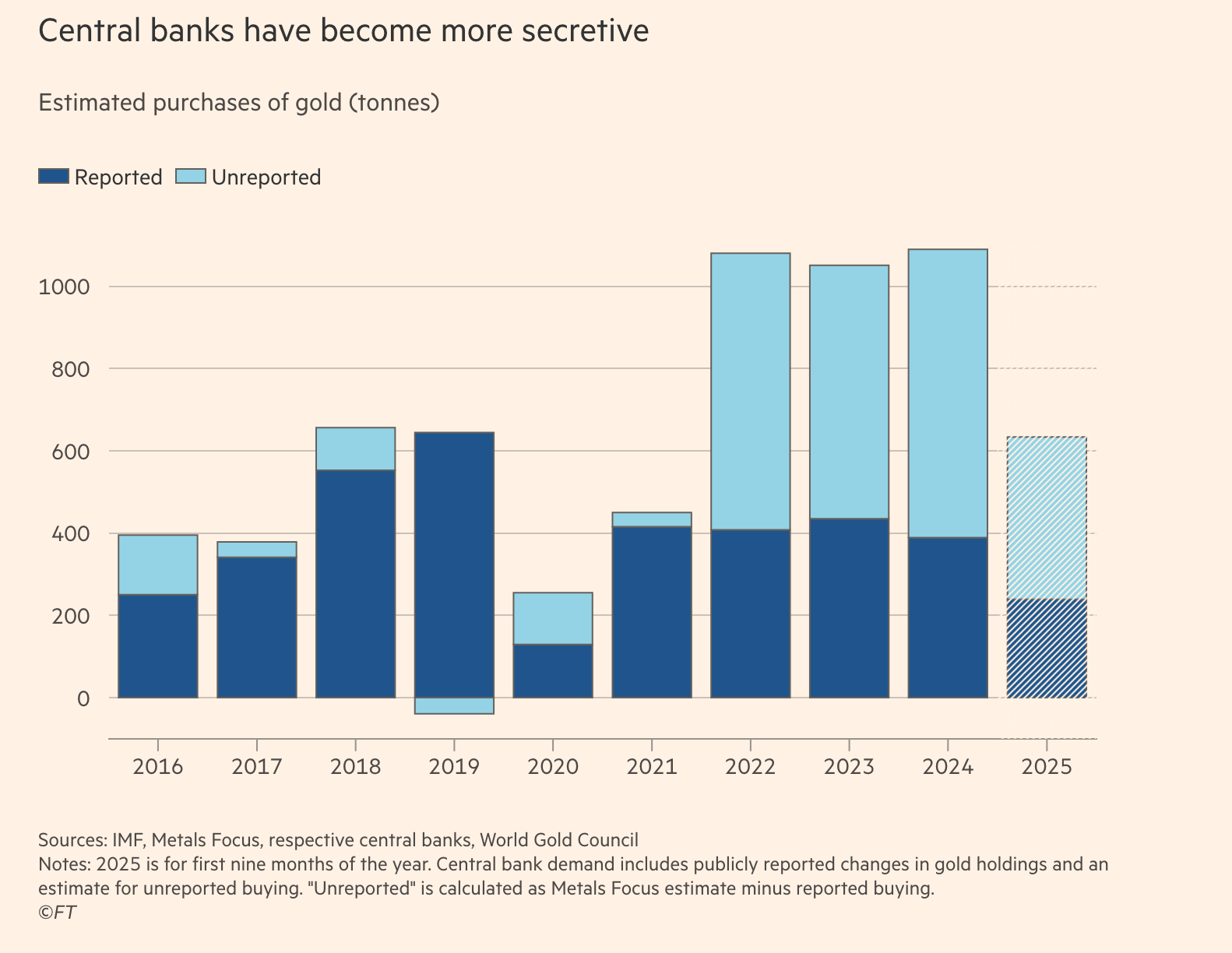Gold: China’s Secret Accumulation Signals a New Era for Bullion
LONDON (November 18) Gold isn’t trading like a commodity anymore. It’s trading like a confession — the closest thing markets have to a whispered admission that the old reserve architecture is buckling under the weight of a new geopolitical cycle. And the FT just confirmed the part everyone suspected but couldn’t publicly say: China isn’t buying a little more gold than it reports — it’s buying ten times more. Enough to move the global price structure, enough to distort every short-term signal, and enough to tell you that Beijing’s true hedge isn’t rhetoric, it’s tonnage.
This isn’t a tailwind for gold. It’s a structural rewiring of how sovereigns prepare for storms.
China’s “ghost flows” into bullion have been simmering in the background for two years — too large to ignore, too opaque to quantify cleanly. Last year, when the idea first surfaced that Beijing was accumulating 10x what it declared, the respectable strategist class rolled their eyes and asked for “evidence.”
Now the FT is hand-delivering the receipts: official purchases of barely 2 tonnes a month… while the real flows likely push toward 250 tonnes annually. That’s over a third of global central-bank demand — executed quietly through Swiss and South African refineries, routed through London, and spirited into deep storage in Shanghai and Beijing.
When you see 400-ounce bars with consecutive serial numbers marching east, that’s not retail demand. That’s a sovereign restacking its balance sheet for the next chapter of global finance. And the old playbook — gold down when the dollar is up — simply doesn’t survive contact with this new reality. Gold has stopped trading against the dollar; it now trades against policy fragility, geopolitical risk, and the credibility of the fiat regime itself.
Goldman’s original $3,000 call, mocked as aggressive twelve months ago, turned out to be the conservative scenario. The logic was clear then and bulletproof now: it’s the policy rate, not the broad dollar, that drives investor gold appetite; central banks buy with dollar reserves anyway; gold and the USD can rally in tandem when geopolitical uncertainty spikes; and China’s local demand is neutral to yuan depreciation because lower rates offset higher spot prices.
But the real accelerant — the part that turns a forecast into a regime story — is the China flow. Once you accept that the reported numbers are political theatre, the market starts to look very different.
Beijing isn’t nibbling. It’s ladling. And it’s doing so with a level of stealth that would make a macro quant weep: only one-third of global central-bank purchases are now reported to the IMF, down from 90% four years ago. Gold’s share of foreign reserves outside the U.S. has rocketed from 10% to 26% over the decade. That’s not diversification; that’s evacuation.
And the next wave isn’t just sovereign. Western ETFs have finally joined the party with their biggest inflow since 2022 — 112 tonnes in a single month — putting private investors back in the same slipstream as the official sector for the first time in this cycle. Ultra-high-net-worth flows are rising. Although I caution against reading too much into ETF flow as purchases come and go, as price momentum ebbs and flows.
Yet even stablecoin issuers like Tether are diversifying into gold alongside T-bills. When the central-bank engine and the private-flow engine start firing together, the tape doesn’t glide higher — it goes vertical. Last Monday’s Asia-hour $25 air pocket higher was classic central-bank buying: a clean break in the London price during thin liquidity, followed by delayed retail momentum in Shanghai and eventually the West.
But the strategic layer is even more telling. China isn’t hoarding gold because it fears inflation or wants a shinier reserve portfolio. It’s building immunity — a sanctions-proof hedge in a world where dollar leverage is now explicitly weaponized. Tariffs, capital controls, decoupling, supply-chain realignment — gold is Beijing’s answer to all of it, the deep-time asset that carries zero counterparty risk and zero “Treasury’s opinion of you” premium. The more unpredictable the geopolitical regime becomes, the more this playbook makes sense.
And China isn’t alone. Qatar and Oman were heavy buyers in September. Southeast Asia is accumulating. Even Cambodia is now holding newly purchased gold in Chinese vaults — a symbolic alignment as much as a logistical one.
Which is why gold isn’t reacting to flows anymore. Gold is the flow.
It’s the reserve asset of choice for sovereigns who no longer trust the U.S. to be a neutral monopolist of the global financial system. It’s the asset that doesn’t blink when Treasury weaponizes FX settlement rails. It’s the only hedge big enough, liquid enough, and politically neutral enough to function as an alternative anchor for countries operating outside the U.S. orbit.
Goldman now has $4,900 penciled in by end-2026, and frankly, that still reads like a midpoint rather than a ceiling. Because once you’re in a world where the biggest buyer refuses
to report 90% of its demand, you’re not trading supply/demand dynamics. You’re trading political uncertainty, wealth preservation, and the quiet panic of a multipolar world.
China’s buying is no longer a rumor.
It’s a signal.
And the signal is loud: the next shock is bigger than the official data suggests — and gold is the only asset Beijing trusts to front-run it.
Investing.com










